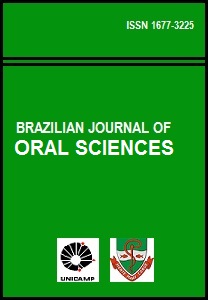Abstract
Aim: This study aimed to evaluate the flexural strength and flexural modulus of different resin composites (MasterFill, Opallis, Z250, Supreme) after photoactivation with quartz-tungsten-halogen (QTH - XL2500) or light-emitting diode (LED - Radii and Ultrablue Is) light-curing units (LCUs). Methods: The irradiance and spectral emission of each unit were evaluated using a power meter and a spectrometer. Flexural strength (MPa) was determined in a three-point bending test in accordance with the ISO4049 standard specifications. Flexural modulus (GPa) was measured from the linear-elastic range on the stress-deformation profile. Data were submitted to two-way ANOVA and Tukey’s test (p<0.05). Results: Different values for irradiance (850, 780 and 590 mW/cm2 ) and peak of emission (484, 456, 467 nm) were detected for XL2500, Radii and Ultrablue Is, respectively. Flexural strength and modulus were dependent on both material and LCU. Among the resins, Z250 and Supreme showed significantly higher strength and modulus than MasterFill and Opallis. Comparing the LCUs, Ultrablue Is showed significantly lower flexural strength and modulus than the others. Conclusion: Flexural strength and modulus were dependent on the irradiance and the spectral emission of the curing units, as well on the resin composite tested.The Brazilian Journal of Oral Sciences uses the Creative Commons license (CC), thus preserving the integrity of the articles in an open access environment.
Downloads
Download data is not yet available.

